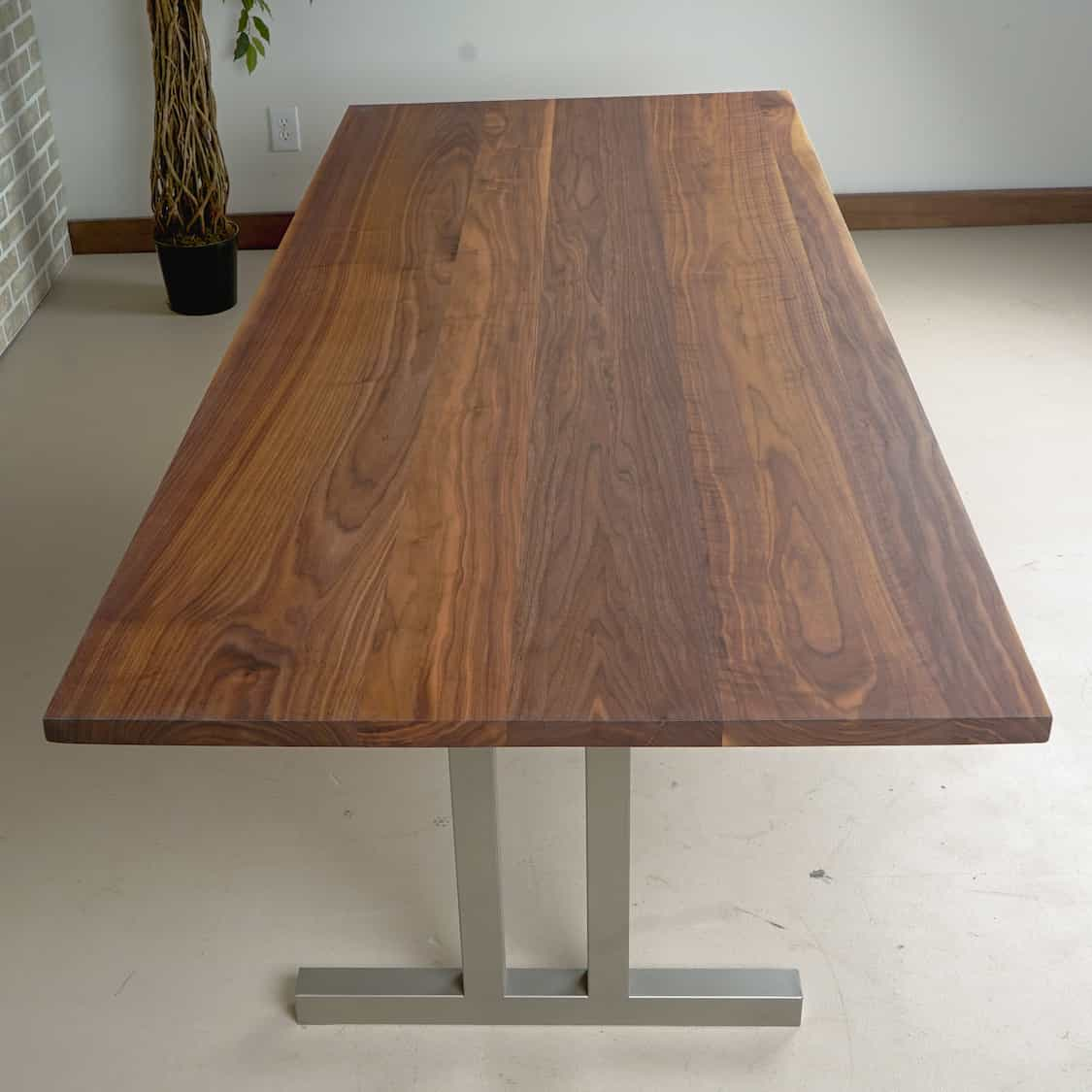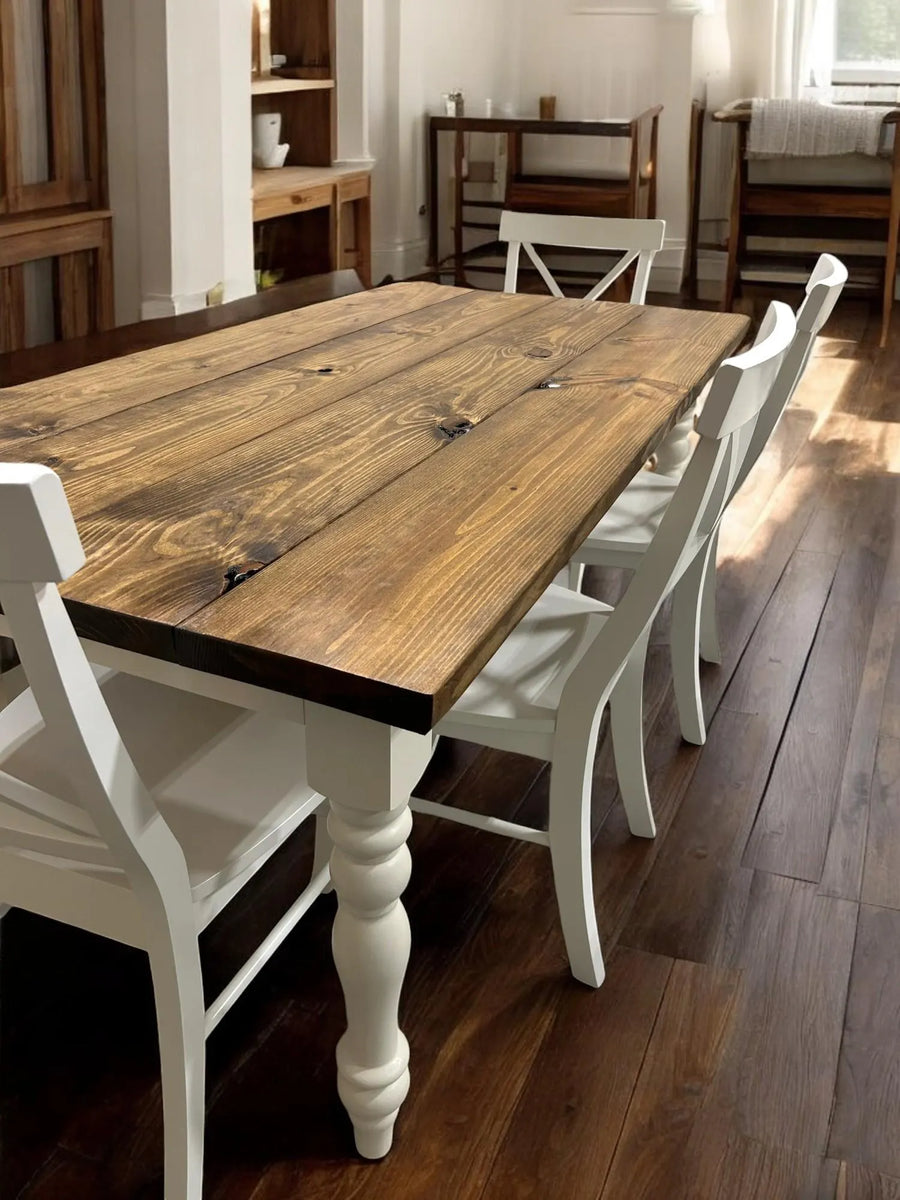Resilient Craftsmanship in Every Piece of Dining Table Legs Wood Available
Resilient Craftsmanship in Every Piece of Dining Table Legs Wood Available
Blog Article
Crucial Factors To Consider for Selecting the Right Dining Table Legs Wood
Selecting the appropriate timber for dining table legs includes a nuanced understanding of various variables that affect both functionality and aesthetic allure. The selection of timber kind, varying from robust woods to much more delicate softwoods, plays a critical duty in guaranteeing longevity and security. Each of these components can significantly impact the general experience of your dining room.
Importance of Wood Kind

Hardwoods, such as oak, walnut, and maple, are usually chosen for their strength and resistance to put on. These kinds of timber provide a robust foundation that can stand up to day-to-day usage, making them ideal for dining tables that experience regular events. On the other hand, softer timbers like ache may be a lot more at risk to dents and scrapes, which might not be ideal for high-traffic areas.
Additionally, the choice of timber can additionally impact the ease of upkeep. Some timbers call for regular oiling or sealing to protect their appearance, while others may be more forgiving. Eventually, picking the ideal timber type entails balancing visual factors to consider with sensible needs, ensuring that the eating table legs not only look attractive but also stand the test of time.
Analyzing Security and Stamina
When evaluating eating table legs, one have to consider the security and stamina they offer to the general structure. The legs are vital in sustaining the tabletop and making certain the eating experience is pleasurable and safe. A stable table is important for preventing tipping or wobbling, which can result in spills or crashes during dishes.
The choice of wood kind dramatically impacts stamina. Hardwoods such as maple, walnut, and oak are typically much more durable and sturdy than softwoods like pine or fir. Furthermore, the density and layout of the legs play an important function; thicker legs or those with a conical layout can use far better assistance and stability.

Visual Considerations
While functionality is critical, the visual allure of dining table legs can not be neglected, as they considerably influence the general style and setting of the dining room. The option of wood, design, and surface can boost or detract from the click to read table's aesthetic impact.

Surfaces likewise play a crucial function in aesthetic appeals. An all-natural coating can highlight the timber's innate beauty, while painted or discolored legs can present shade and personality right into the area. The proportion and range of the legs loved one to the tabletop and surrounding furnishings must be taken into consideration to guarantee aesthetic balance and communication.
Eventually, the table legs must not only serve a functional function but also add to a natural and inviting atmosphere, making them a crucial factor to consider in the overall design of the eating location.
Maintenance Requirements
To make sure longevity and maintain the beauty of wooden table legs, normal maintenance is vital (Dining Table Legs Wood). Wood is a natural material that can be susceptible to harm from dampness, warm, and use. Consequently, establishing a routine care plan will substantially improve the durability of your table legs.
Begin with regular dusting utilizing a soft, lint-free fabric to eliminate dust and debris that can scratch the surface. For more thorough cleaning, use a mild soap option and damp cloth, avoiding excess moisture that might permeate right into the timber. It is a good idea to use a top quality timber polish or conditioner every few months to nourish the wood and keep its appeal.
Resolve any type of dents or scratches immediately with proper wood filler or touch-up pens to prevent further damage. By sticking to these upkeep demands, you will certainly not just protect the visual appeal of your wooden eating table legs yet likewise prolong their useful lifespan.
Budget and Cost Variables
Budget plan and cost factors frequently play a you can try this out vital function in the decision-making process for choosing wooden dining table legs. When reviewing alternatives, it is necessary to establish a clear budget that straightens with your general furnishings financial investment. The expense of wood eating table legs can differ significantly based on the kind of style, workmanship, and timber complexity.
Hardwoods such as oak, walnut, and cherry commonly command greater rates because of their durability and visual allure. On the other hand, softer woods like yearn may be extra economical but might not use the same longevity. Furthermore, personalized or artisan-crafted legs can sustain extra prices, reflecting the skill and time spent in their development.
It is also crucial to take into consideration the potential long-term worth of your financial investment. While choosing lower-cost materials may seem financially sensible at first, they may need even more frequent replacement or fixings, inevitably raising overall expense.
Consequently, balancing top quality and cost is important. Prioritize products that meet your aesthetic preferences while guaranteeing they fit conveniently within your budget, permitting you to produce an eating location that is both aesthetically attractive and functional.
Verdict
In conclusion, choosing the appropriate timber for dining table legs requires mindful factor to consider of numerous variables, including wood kind, stability, visual appeals, maintenance, and spending plan. Inevitably, a well-informed decision will boost the durability and aesthetic appeal of the dining table, ensuring contentment and functionality for years to come.
Picking the best type of wood for eating table legs is important for both aesthetic allure and structural integrity. Eventually, choosing the proper timber kind involves stabilizing aesthetic factors to consider with functional requirements, making certain that the eating table legs not only look attractive but also stand the examination of time.
It is advisable to apply a top notch wood gloss or conditioner every few months to nurture the wood and keep its appeal.
The expense of wood eating table legs can vary substantially based this hyperlink on the type of design, timber, and craftsmanship complexity.
In verdict, choosing the appropriate timber for dining table legs requires careful factor to consider of various variables, including timber type, security, aesthetic appeals, maintenance, and budget plan.
Report this page